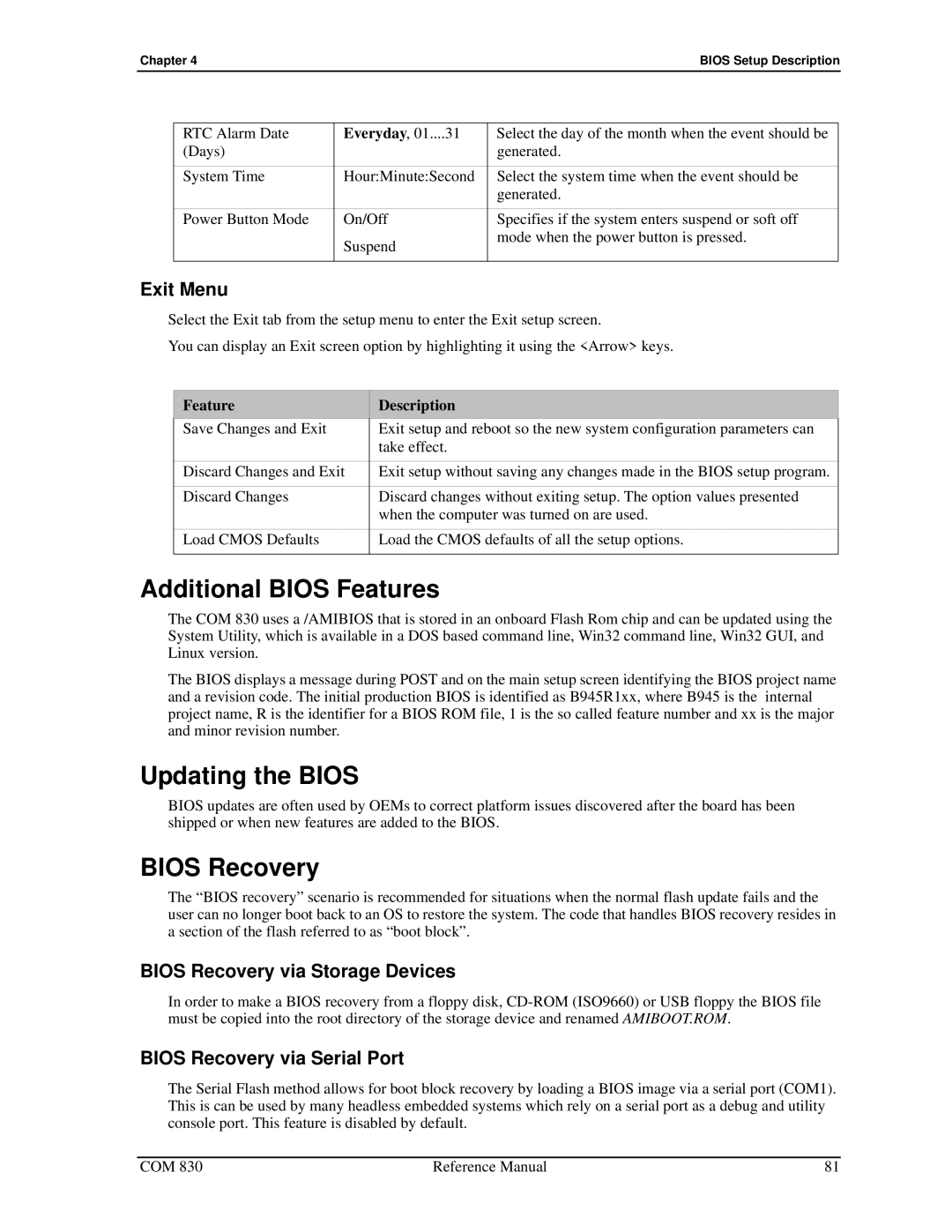
Chapter 4BIOS Setup Description
RTC Alarm Date | Everyday, 01....31 | Select the day of the month when the event should be |
(Days) |
| generated. |
|
|
|
System Time | Hour:Minute:Second | Select the system time when the event should be |
|
| generated. |
|
|
|
Power Button Mode | On/Off | Specifies if the system enters suspend or soft off |
| Suspend | mode when the power button is pressed. |
|
| |
|
|
|
Exit Menu
Select the Exit tab from the setup menu to enter the Exit setup screen.
You can display an Exit screen option by highlighting it using the <Arrow> keys.
Feature
Description
Save Changes and Exit | Exit setup and reboot so the new system configuration parameters can |
| take effect. |
|
|
Discard Changes and Exit | Exit setup without saving any changes made in the BIOS setup program. |
|
|
Discard Changes | Discard changes without exiting setup. The option values presented |
| when the computer was turned on are used. |
|
|
Load CMOS Defaults | Load the CMOS defaults of all the setup options. |
|
|
Additional BIOS Features
The COM 830 uses a /AMIBIOS that is stored in an onboard Flash Rom chip and can be updated using the System Utility, which is available in a DOS based command line, Win32 command line, Win32 GUI, and Linux version.
The BIOS displays a message during POST and on the main setup screen identifying the BIOS project name and a revision code. The initial production BIOS is identified as B945R1xx, where B945 is the internal project name, R is the identifier for a BIOS ROM file, 1 is the so called feature number and xx is the major and minor revision number.
Updating the BIOS
BIOS updates are often used by OEMs to correct platform issues discovered after the board has been shipped or when new features are added to the BIOS.
BIOS Recovery
The “BIOS recovery” scenario is recommended for situations when the normal flash update fails and the user can no longer boot back to an OS to restore the system. The code that handles BIOS recovery resides in a section of the flash referred to as “boot block”.
BIOS Recovery via Storage Devices
In order to make a BIOS recovery from a floppy disk,
BIOS Recovery via Serial Port
The Serial Flash method allows for boot block recovery by loading a BIOS image via a serial port (COM1). This is can be used by many headless embedded systems which rely on a serial port as a debug and utility console port. This feature is disabled by default.
COM 830 | Reference Manual | 81 |
